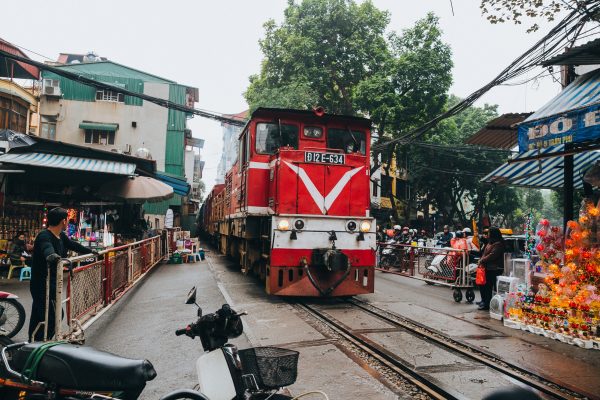Vietnam’s government has taken the first step toward the construction of a long-envisioned high-speed rail along the country’s spine, at the reported cost of $58.7 billion. According to a Reuters report that cited a government statement released yesterday, the country’s Ministry of Transport will next month submit a proposal to build the 1,545-kilometer railway to the Politburo, the top decision-making body of the ruling Vietnamese Communist Party (VCP).
The 1,545-kilometer rail line would connect the southern metropolis of Ho Chi Minh City to the capital Hanoi in the north, supplementing the longer 1,729-kilometre railway that dates back to the era of French rule. As VnExpress reported last month, this new rail line would be used to transport passengers, while the existing railway routes would be used solely for freight.
The ministry’s plan envisions the first two sections of the railway, which would have a combined length of 665 kilometers and require an investment of $24.72 billion, being open to traffic by 2032. The entire project is slated to be completed by 2045-2050. The Ministry previously said it hopes to begin construction on the project by 2028.
In theory, railway upgrades are a logical move for Vietnam. The country’s slim, attenuated geography is ideally suited for rail infrastructure, and improving the speed and efficiency of the current “reunification express” linking Ho Chi Minh City and Hanoi, and its various extensions and spur lines, would seem to be a no-brainer.
For this reason, a north-south high-speed rail has been on the agenda since at least 2006, when Japan and Vietnam signed a memorandum of understanding on the railway’s development. (Tokyo continues to be Vietnam’s partner of choice, given the country’s allergy to large-scale Chinese infrastructure investments, and the persistent local sensitivities about the presence of Chinese workers in Vietnam.)
The main question is whether the enormous cost can be justified. Unlike its fraternal rival, the Chinese Communist Party, which has built tens of thousands of kilometers of high-speed rail since the turn of the century, the VCP does not have the technological know-how, industrial overcapacity, and surplus capital that have made breakneck high-speed rail development economically feasible for Beijing.
Indeed, Vietnam’s bullet train plans have persistently foundered on the financial rocks. In 2010, Vietnam’s National Assembly rejected the high-speed rail proposal as economically unsustainable, arguing that few Vietnamese would be able to afford excessive fares.
“This project is too risky and too luxurious for Vietnam where we have many other things to do with agriculture, education, electricity, and other transport projects,” the Vietnamese economist Pham Chi Lan told The Associated Press, arguing that the project would not serve the 70 percent of Vietnamese who live in rural areas.
The question is whether the economic and demographic logic has shifted since then. The project’s then price tag of $56 billion amounted to nearly half of the country’s gross domestic product (GDP) in 2009. But the country’s economy has more than doubled from $106 billion to $271 billion as of 2020, making the project marginally more feasible.
Even if the economics can be made to work, it would be close to a miracle if the project began construction according to the ministry’s timetable, let alone finished on time. Urban metro systems in Ho Chi Minh City and Hanoi have both seen persistent delays, dragging on for nearly a decade, and there is no reason to think that a more complex high-speed rail project would be any different. This is especially so given that land reclamation for the new line looms as a challenge of considerable complexity and political sensitivity, even for a one-party state like Vietnam.
Vietnam will one day get its bullet train – but it will most likely be several decades before the first passengers are welcomed aboard the new Reunification Express.


